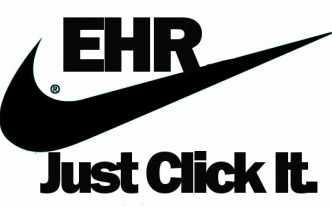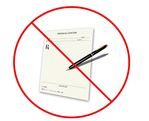
- "EHR has turned us from MDs into data entry clerks! We have gone from being a medical practice to an IT firm."
- "I feel less satisfied at the end of the day now. When patients are all gone, I'm typing, spell-checking, and doing autocorrections."
- "The measures of quality [in EHR] are based on checked boxes, not real outcomes. They have to be, or it fails. Simple is always better!"
- "The most important keystroke is to push the PC aside and face the patient directly."
- "I live in a town that has passed legislation criminalizing texting and driving. A driver is more impaired and distracted when texting than when intoxicated. EHRs and the practice of medicine should be no different. Do you really believe that your physician is actually concentrating on the patient in front of them while their attention is primarily focused on entering data in a computer?"
- "It's time to tell the practice managers, insurance companies, and efficiency consultants that patients expect and deserve a real physician who is a caring human being and is able to take the time and provide the human element that is a major dimension of healing."
Improving the EHR Experience
Doctors who have found satisfaction with their EHR product offered suggestions to their frustrated colleagues for making the EHR less intrusive.
Let the patient interact with the computer, too. "[Older] patients feel much more comfortable with the computer when I pull up their actual scans on the monitor and use them to explain their disease...For many patients, the computer is not only an accepted but welcome presence." (Oncology)
Identify the benefits of using an EHR and what works well. "I have a lot of stuff in the current note that used to be buried in the chart (or omitted). Every patient gets a printout of today's interim history and the proposed plan, as well as a list of meds and diagnoses." (Psychiatry)Bigger might be better. "I have a 32-inch monitor screen on the wall and wireless keyboard and mouse. It sucks the patient into their record and is unmatched for patient education." (Primary Care)
Switch the workflow and take notes. "I leave the computer out of the exam room and take notes as necessary, then complete the EHR after the interview, while my assistant is performing her tasks with the patient." (Gastroenterology)
Enter what’s necessary first, then use pen and paper. "I inform the new patient, 'I'm just going to get some background information, and then I will talk to you about why you are here.' Once the database is completed, I print off the sheets and conduct the history and physical in the same manner I have done for the past 38 years." (Internal Medicine)
Learn to touch-type. "I touch-type, which I highly recommend learning. I can maintain eye contact while entering their history." (Internal Medicine)
Cohen noted that most physicians are not completely satisfied with current EHR technology, but many users are hopeful about what the future will bring to healthcare technology, especially as improvements are made to free up the physician to interact with patients.
Of course, as one physician pointed out, there is one generation of patients that probably aren’t bothered at all by the presence of the computer:
"They [teenagers] won't notice you looking at a screen because their peripheral vision isn't that good, and they never break their texting trance. ...This EHR [problem] may be a transient issue; it certainly doesn't bother the younger generation."
Perhaps the issue is transient, as the provider above suggests, especially as computers and other technologies saturate our society and lives, but insights from successful users may be beneficial as we transition to this new way of medical record keeping and documentation.







 RSS Feed
RSS Feed